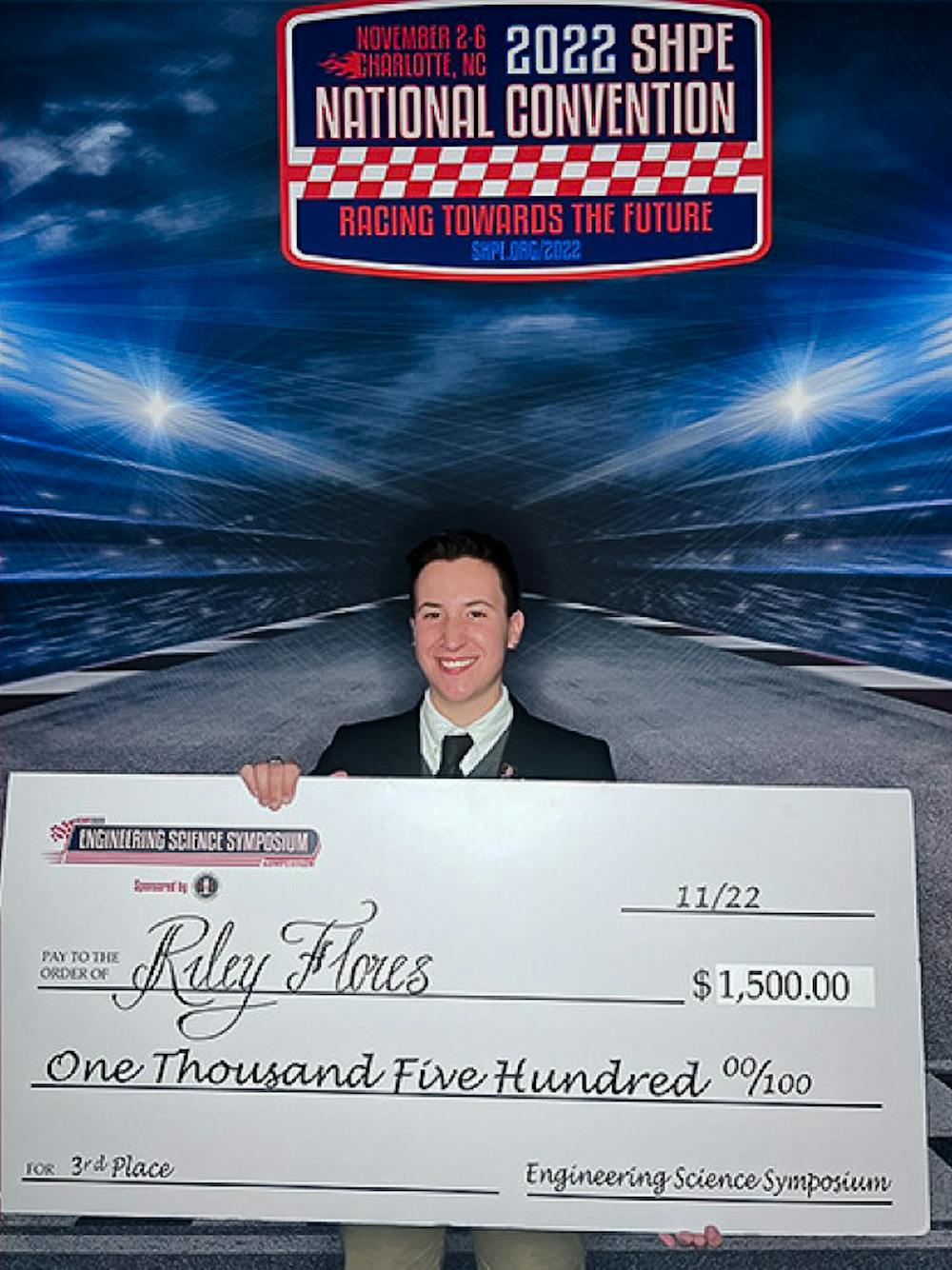Riley Flores ’22.5 received the best research presentation award at the 2022 National Convention of the Society of Hispanic Professional Engineers, held in Charlotte, N.C. Her presentation, titled “A Device for Multiplexed Processing of Glioblastoma Spheroids,” is part of a research project in the University’s Tripathi Laboratory for Microfluidic Diagnostics and Biomedical Engineering, supervised by engineering PhD candidate Cel Welch GS.
“I have no words,” Flores said. “It’s not just me, it’s the lab, it’s my mentor, Cel, they’re the ones who have also won the award … I’m incredibly proud of it, I think it’s going to make an impact,” she added.
Flores was one of a few undergraduates who participated in this competition and the judges “told me that we were impressed that an undergraduate presented this work,” she said.
When Flores joined her lab in summer 2021, she had limited device knowledge and no prior research experience; she joined with the goal of learning how to make low-cost, accessible devices.
Her project is part of Welch’s graduate student project, which uses electric fields to optimize tissue dissociation methods that are used to break down tissues into single cells. This is important for single-cell sequencing, a technique used to “understand the genetic complexity in tissue,” which is important for cancer research, Flores added.
Current approaches to tissue dissociation include chemical and mechanical methods like trituration, which involves pipetting a solution up and down, Flores said. However, these techniques are not the most reliable and sometimes lead to low cell survival.
Welch’s research team found the optimal conditions to separate samples of bovine liver tissue and glioblastomas — tumors of the spinal cord or brain, Flores said. Using these parameters, Flores created a device called SinglePlex that can be used to process the samples, she said.
From there, she and Welch were able to create a Multiplex device with multiple electric outputs, designed to be portable, low-cost and capable of increasing the number of samples they could process, she added. Though the hardware is complete, the researchers are still working on the device’s interface “because we want to make this something that hopefully can be used in the clinical setting or the research setting,” Flores said.
Now, Flores is leading her own project to create a diagnostic device to identify chlamydia. “It's very exceptional for an undergraduate student to not only contribute so much to a PhD-led research project, but then to also have the ability to design their own research projects and to take that level of initiative that's required to actually execute your own research project from the ground up,” Welch said.
Flores is a former president of the Brown chapter of SHPE and founder of a SHPE chapter at her high school in a predominantly Hispanic community. The SHPE is the “nation's largest association dedicated to fostering Hispanic leadership in the STEM field,” according to their website.
The Brown chapter of SHPE holds events for “professional development, things like resume workshops and interview workshops,” Ulysses Chevez ’23, current president of the Brown chapter of SHPE, said.
During the annual national convention in November, “SHPE members from all across the country will come to one location,” Chevez said, along with about a hundred different companies and graduate schools.
The national convention “was so incredible, seeing so many other Hispanic engineers striving for greatness the same way that you are,” Chevez said. It is also an opportunity to network and attend workshops, he added.
“The companies are there to hire people, so you can get an offer right on the spot,” Chevez said. SHPE “makes sure we train whoever goes and we make sure that they’re prepared to go,” Flores added.
One of SHPE’s main goals is “providing a sense of familia, which is family in Spanish,” Chevez said. “Being Latino or Hispanic coming to Brown, especially in engineering, there's not as many who look like you, have the same background as you. So finding a group of people who do have that is very comforting and gives me a home, especially because I think a lot of us come from places that are predominantly Hispanic,” he added.
“I feel like SHPE here at Brown is not known well enough and it's such a shame because I feel like we're such a good research resource,” Flores said. Flores emphasized that despite the misconceptions its name might evoke, SHPE supports Hispanic students across all STEM fields, not just engineering.
Flores is currently applying to graduate schools, where she hopes to continue investigating diagnostic devices among other interests she hopes to explore.





